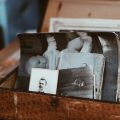I work for a company that really appreciates what I do. How do I know that? They pay me for my services, make the workplace fun, provide great insurance and benefits—and interestingly, they encourage me to copy.
Generally, forgery is frowned upon. You wouldn’t try and write every song you listen to. You probably don’t make the cars that you drive. We use things all day every day that others have provided because we are blessed to have abundance in this country [the United States]. Instead of trying to do everything all on our own, we often surround ourselves with interesting people that contribute to making our lives happy and full. We also get the chance to help others when they stand in need. We can all agree with that.
My profession is in customer and technical support. We provide solutions to our clients’ problems. Much of that is personal and face-to-face, but there is also a component of digital solutions. Our goal is to provide the best solution as quickly and proficiently as possible to help our clients resolve their technical issues in a timely manner. Punctuality and precision are critical. If that means that we need to “copy” another case that effectively achieved the desired result, all the better. We want to provide the best answer every time. It can be unique and customized as needed, but it is also important that the solution is prompt and accurate so it quickly gets the customer back on their feet.
Sometimes the best strategy is to copy a similar solution with the correct answer when it has already been created and verified for another client. We do so without hesitation and with increased confidence and precision.
It is not so different from the way we do things every day of our lives: we read blogs to glean other perspectives so that we can experience good times; we use the suggested, verified steps to figure out difficult algebraic equations; and we follow recipes explicitly to end up with the same desired result in the kitchen. These are a just sampling of instances where copying others can prove valuable.
We also do this when we follow examples others have set for us to help get through the challenges of life. There is nothing unusual about that. Jesus Christ taught, “For the works which ye have seen me do that shall ye also do; for that which ye have seen me do even that shall ye do” (3 Nephi 27:21).
I have benefitted enormously by rubbing shoulders with and learning from good examples. Similarly, we can use the Internet and others’ talents to spice up our personal histories in at least the following ways:
- Engaging interesting media
- Reporting current events
- Stimulate writing by including pertinent videos
- Applying inspirational resources
- Mimicking great examples
I am not suggesting that we create our histories with information that is incorrect or inaccurate, or that doesn’t apply to us. I am suggesting that you use these images, sound bites, videos, and accounts that do illustrate your life, memories, and personal interpretations, just like what is being done all over the internet right now.
Making our personal histories more interesting and effective is a significant reason to use the resources I’ve suggested, but the larger purpose (in my opinion) to post interesting elements of your journal online is because that is exactly where your children and grandchildren will go to find information about you. They will Google it, of course.
This (Googling names) is already happening all over the web, and results often include elements from FamilySearch.org and other genealogy sites. Personal information should not be shared for obvious reasons, but I believe historical stories, images, and audio to be safe and secure.
To help illustrate my point, I have a few examples that demonstrate the efficiency and effectiveness of personal histories online. These brief descriptions were taken from Wikipedia:
FamilySearch.org is a genealogy organization operated by The Church of Jesus Christ of Latter-day Saints (also known as the LDS Church). It was previously known as the Genealogical Society of Utah (or “GSU”) and is the largest genealogy organization in the world. FamilySearch maintains a collection of records, resources, and services designed to help people learn more about their family history.
Ancestry.com is a privately held online company based in Lehi, Utah. The largest for-profit genealogy company in the world, it operates a network of genealogical, historical record and genetic genealogy websites. As of November 2018, the company claimed to provide access to approximately 10 billion historical records, to have 3 million paying subscribers and to have sold 14 million DNA kits to customers.
Biography.com is a U.S. documentary television series and media franchise created in the 1960s by David Wolper and owned by A&E Networks since 1987. Each episode depicts the life of a notable person with narration, on-camera interviews, photographs, and stock footage.
Storycorps is an American non-profit organization whose mission is to record, preserve, and share the stories of Americans from all backgrounds and beliefs. StoryCorps grew out of Sound Portraits Productions as a project founded in 2003 by radio producer David Isay. Its headquarters are located in the Fort Greene neighborhood of Brooklyn, New York.
Story Trek is produced all over the United States, and I love it. Now that description obviously did not come from Wikipedia, but this program touts that everyone has a story to share, and every story is worth sharing. TV journalist Todd Hansen visits to learn touching stories about courage, faith, and strength. He travels randomly across the country to collect incredible stories from everyday people.
RootsTech is a family history and technology conference and trade show held annually in the Salt Palace Convention Center, Salt Lake City, Utah. In 2017 it claimed to be the world’s largest family-history technology conference. It is the successor to three former conferences: the Conference on Computerized Family History and Genealogy, the Family History Technology Workshop, and the FamilySearch Developers Conference. Over the years, RootsTech has welcomed a number of celebrities, television personalities, and actors as speakers. This year Emmy award–winning actress Patricia Heaton was the event’s keynote speaker. Much of the proceedings is online for your use and perusal.
Josh Groban is one of my favorite performers. He is a legend in his own time, in my opinion. Many of his songs are well-known and cherished. Why wouldn’t I include his performances potentially in my journal for my posterity and those who will someday read about my times? Like backup singers or a duet, these resources provide great harmony. They give visibility into the day and age when I am living, as well as my likes, my emotions, and the sentiments that I want to share with others.
Besides, his gift makes me happy, and the lyrics of his songs are those of my heart as well. Because I am kind of a techy, I have discovered new methods, identified free resources, and engaged great strategies to help me share my story online for my children, grandchildren, and extended posterity. (If you’d like to journal online but are looking for a more private experience, consider making your blog “private,” or you can use sites like JRNL.com.)

To read more of Walter’s articles, click here.
I intentionally used videos from just one artist in this article to illustrate the wealth of information available. Consider how a single performer alone can enable us to recollect high school experiences, tender memories, special commitments, or first loves lost. Media not only brings one’s history to life, they make it more interesting and fun to both experience and enjoy. Millions of media options are available for your use.
Many people are participating in this quest today without even realizing it—e.g. Facebook, Twitter, Instagram, Pinterest, YouTube, LinkedIn, Snapchat, Google Maps, ReverbNation, phones, websites, and a thousand other mediums. You may think that because the apps you use are available a short time or let you see images and other content for just a few moments, that your posts/pictures/etc. are gone or inaccessible… But nothing on the Internet is really gone forever. You have heard this before. Believe it.
You can use this principle to your advantage as well. How many of us have wondered about the dates a picture was taken? Everyone has old (or not so old) pictures that have nothing written on the back. Frequently, digital pictures right now take care of this for you. They often provide much more detail and information than you can even imagine, like exactly where and when the picture was taken, and technology is beginning even now to identify the people that are in the photo.
An old email account, or emails sent and received in your current account, can provides dates, particulars, and fodder for your personal history without doing anything beyond what you already doing every day.
So if you take anything from this article at all, realize that your personal history is at this present moment being compiled. And with a little effort you can really make it sing… Literally.
About Walter Penning
In 1989, Walter Penning formed a consultancy based in Salt Lake City and empowered his clients by streamlining processes and building a loyal, lifetime customer base with great customer service. His true passion is found in his family. He says the best decision he ever made was to marry his sweetheart and have children. The wonderful family she has given him and her constant love, support, and patience amid life's challenges is his panacea.
Twitter •






